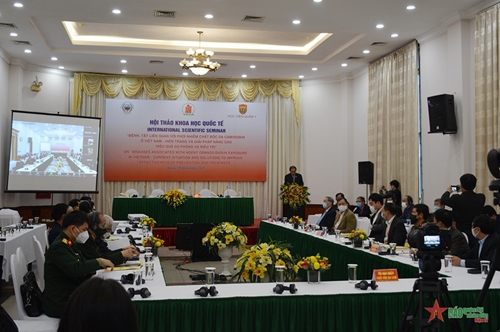Participants analyze the real situation of the diseases in Vietnam, evaluating the results of relevant researches and giving a number of models of preventing and treating diseases related to Agent Orange/dioxin (AO) exposure.
    |
 |
|
At the event (Photo: qdnd) |
Deputy Minister of Health Nguyen Truong Son said that although the war ended nearly 50 years ago, dioxin consequences have still lingered. AO victims and their offspring have suffered serious diseases and deformities, while medical facilities have yet to meet their demand, he said.
The official said that despite efforts to support AO victims, the prevention and cure of AO related diseases have remained a tough issue that needs further researches.
Son stressed the need to strengthen communications to raise public awareness of caring for AO victims, focusing on improving the quality of human resources training for doctors at local medical facilities, enhancing medical services for AO victims, and expanding international cooperation in the field.
He suggested the implementation of more researches on the features of AO related diseases and relevant factors, and the building of a database and digital system serving the caring and treatment for the victims, along with the provision of more support to them.
At the event, scientists called on the governments of countries and the international community to continue assisting Vietnam in settling AO consequences. They underscored the need for continuous detoxification of dioxin in affected areas, along with stronger investment in researches as well as prevention and treatment of diseases related to AO exposure.
From 1961 to 1971, the U.S. troops conducted 19,905 missions, spraying about 80 million liters of toxic chemicals - 61 percent of which, containing 366kg of dioxin, was AO - on 3.06 million ha of land in southern Vietnam, equivalent to nearly 25 percent of the south’s total area. Up to 86 percent of the affected area was sprayed more than twice, and 11 percent more than 10 times.
About 4.8 million Vietnamese people have been exposed to AO, and more than 3 million others who are their second, third, and even fourth generations have still suffered from pains and losses.
Source: VNA